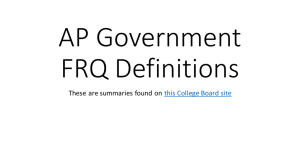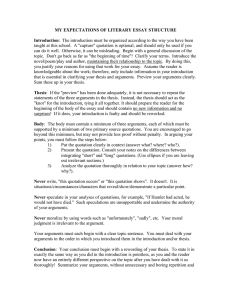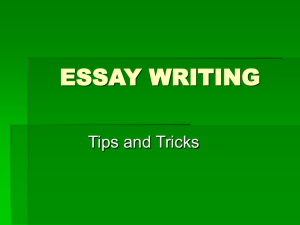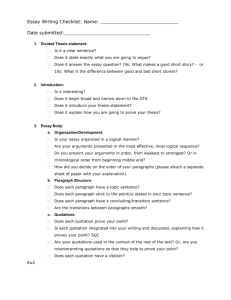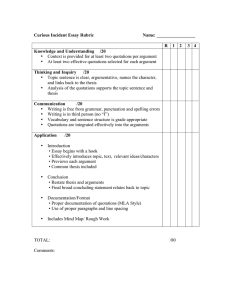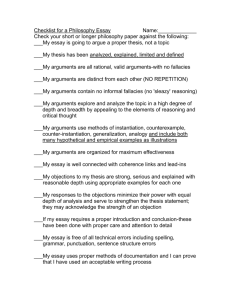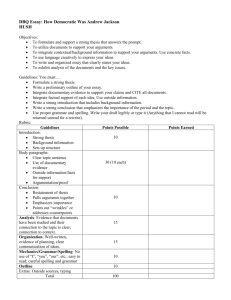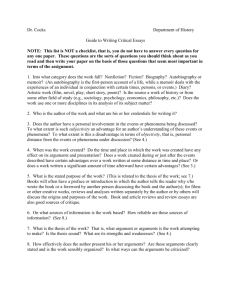MY EXPECTATIONS OF LITERARY ESSAY STRUCTURE Introduction
advertisement
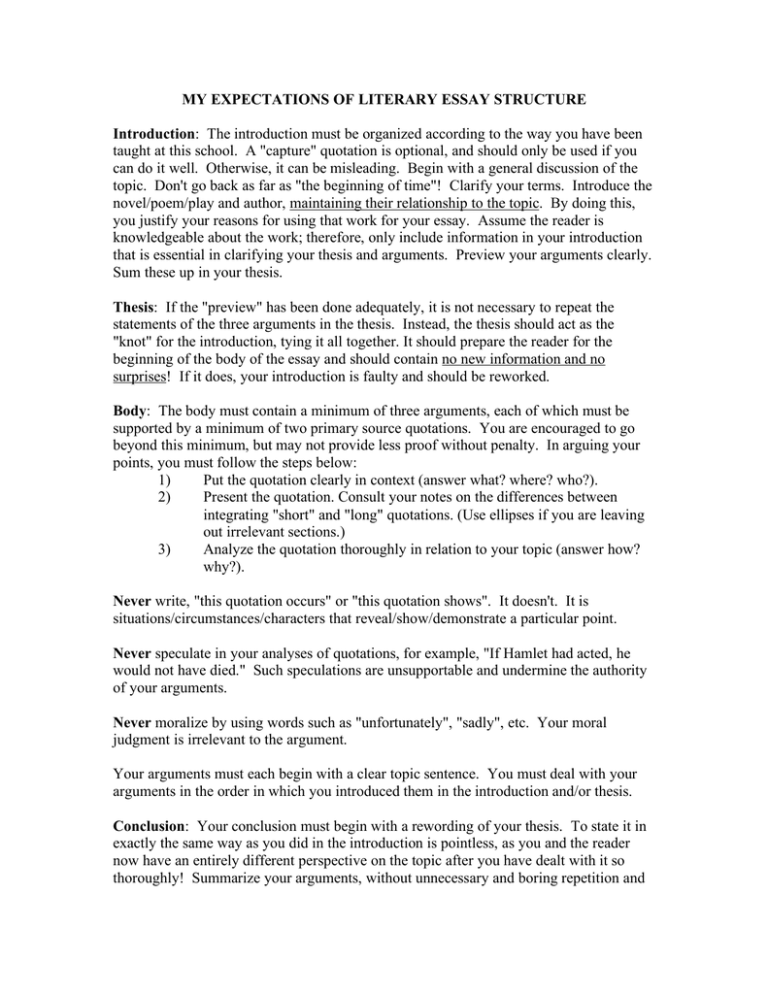
MY EXPECTATIONS OF LITERARY ESSAY STRUCTURE Introduction: The introduction must be organized according to the way you have been taught at this school. A "capture" quotation is optional, and should only be used if you can do it well. Otherwise, it can be misleading. Begin with a general discussion of the topic. Don't go back as far as "the beginning of time"! Clarify your terms. Introduce the novel/poem/play and author, maintaining their relationship to the topic. By doing this, you justify your reasons for using that work for your essay. Assume the reader is knowledgeable about the work; therefore, only include information in your introduction that is essential in clarifying your thesis and arguments. Preview your arguments clearly. Sum these up in your thesis. Thesis: If the "preview" has been done adequately, it is not necessary to repeat the statements of the three arguments in the thesis. Instead, the thesis should act as the "knot" for the introduction, tying it all together. It should prepare the reader for the beginning of the body of the essay and should contain no new information and no surprises! If it does, your introduction is faulty and should be reworked. Body: The body must contain a minimum of three arguments, each of which must be supported by a minimum of two primary source quotations. You are encouraged to go beyond this minimum, but may not provide less proof without penalty. In arguing your points, you must follow the steps below: 1) Put the quotation clearly in context (answer what? where? who?). 2) Present the quotation. Consult your notes on the differences between integrating "short" and "long" quotations. (Use ellipses if you are leaving out irrelevant sections.) 3) Analyze the quotation thoroughly in relation to your topic (answer how? why?). Never write, "this quotation occurs" or "this quotation shows". It doesn't. It is situations/circumstances/characters that reveal/show/demonstrate a particular point. Never speculate in your analyses of quotations, for example, "If Hamlet had acted, he would not have died." Such speculations are unsupportable and undermine the authority of your arguments. Never moralize by using words such as "unfortunately", "sadly", etc. Your moral judgment is irrelevant to the argument. Your arguments must each begin with a clear topic sentence. You must deal with your arguments in the order in which you introduced them in the introduction and/or thesis. Conclusion: Your conclusion must begin with a rewording of your thesis. To state it in exactly the same way as you did in the introduction is pointless, as you and the reader now have an entirely different perspective on the topic after you have dealt with it so thoroughly! Summarize your arguments, without unnecessary and boring repetition and then close strongly. Universalize briefly the concept you have developed. This is difficult, yet these last few statements are critical to the reader's impression of the arguments, and of you as a writer. Other important information: Your essay must also include properly formatted title page and a "Works Cited" page. Please refer to your copy of The Centennial Communications Guide to assist you in setting these up correctly. (See "Bibliography" set-up for "Works Cited".) Please use internal referencing for all your primary and secondary source quotations. All pages other than the title page must be numbered on the top right-hand corner. *All essays must be accompanied by rough work that shows clear evidence of editing. Either hand-edit or highlight modifications you have made. NO ROUGH WORK = NO MARK! DO NOT LOSE THIS SHEET. YOU ARE RESPONSIBLE FOR ALL THE INFORMATION CONTAINED ON IT. IF YOU HAVE ANY QUESTIONS, PLEASE ASK!
